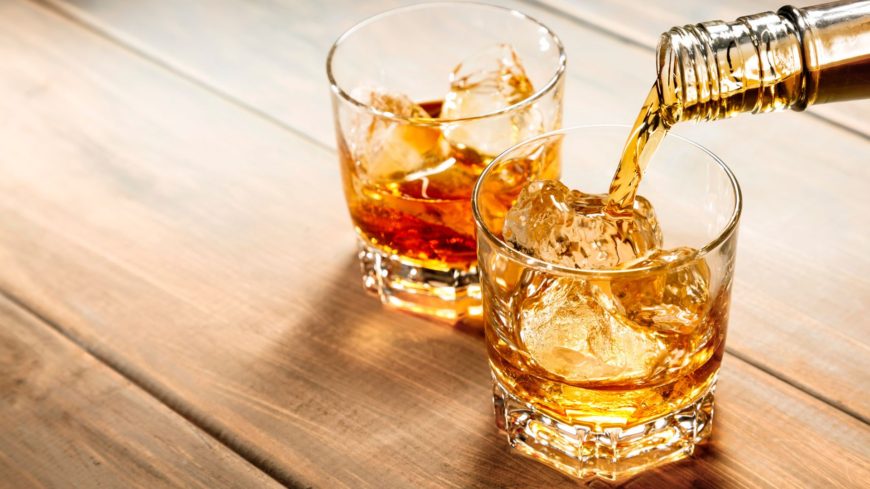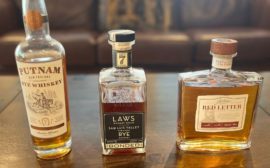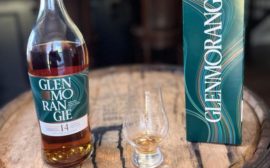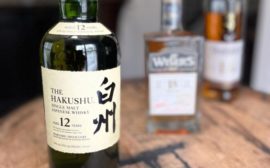Japanese whiskies continue to impress by winning international competitions. The World Whisky Awards (WWA) 2023 awarded Ichiro’s Malt & Grain Blended Japanese Whisky from Chichibu Distillery as the World’s Best Blended Limited Release. Nikka’s Taketsuru Pure Malt also won World’s Best Blended Malt.
In April 2021, the Japan Spirits & Liqueurs Makers Association (JSLMA) created guidelines regarding labeling standards for Japanese to protect the category and to avoid misleading customers. Distilleries and liquor businesses (a.k.a. Operators) are allowed to keep the current labels on their products until March 31, 2024, and discontinue the use of the words “Japanese Whisky” in expressions that did not meet the following standards:
– Raw Ingredients. Limited to malted grains, other cereal grains, and water extracted in Japan. Malted grains must always be used.
– Production. Saccharification, fermentation, and distillation must be carried out at a distillery in Japan. Alcohol content at the time of distillation must be less than 95%.
– Aging. The distilled product must be poured into a wooden cask not exceeding the capacity of 700 liters and matured in Japan for at least three years.
– Bottling. Bottling must take place only in Japan, with alcoholic strength no less than 40% ABV as of such time.
Finally, the labeling guidelines also prohibit operators from misleading customers by using terms like Japanese-style whisky using the Japanese flag, Japanese symbols, or the alphabet, among other practices to might mislead consumers. Whiskies made from non-malted rice and shochu will no longer be allowed to be called Japanese Whisky after March 31, 2024.
These labeling guidelines do not constitute Japanese law since the JSLMA is not a regulatory entity but a self-governing body whose members belong to the alcohol industry and agree to cooperate voluntarily. At some point, we should see the Japanese government enacting regulations, but the time for that is TBD.
Those following my blog have noticed that the frequency of Japanese Whisky reviews has decreased compared to other whiskey categories. The reason is that the US market, specifically Atlanta liquor stores, is flooded with fake Japanese Whisky (made with imported whisky, typically grain whisky). I have listed below a couple of Japanese Whiskies I have reviewed on my blog, and neither expression meets the labeling guidelines set by the JSLMA.
– Nikka from the Barrel. This delicious blend contains Ben Nevis whisky from Scotland and won The Whisky Advocate’s Whisky of the Year in 2018. Check the review here.
– Shinobu 10 Year Old Pure Malt Mizunara Oak Finish. Another tasty whisky with ashy notes. Check the review here.
Both expressions are flavorful and memorable, but my guess is that people paying for a bottle of Japanese Whisky would like to get 100% Japanese Whisky. It is frustrating to see how blending Japanese companies and distilleries that do not produce grain whisky buy it in bulk from other countries, put a Japanese name or symbol on the label, and sell it as Japanese Whisky. Regulations about Japanese Whisky have been so lax for so long that until 1968 Japanese whisky sold in Japan did not need to contain any whisky. Also, as long as the whisky was bottled in Japan it could be called Japanese Whisky.
What we are seeing now is a significant number of liquor companies that piggyback on the reputation of whisky producers that have achieved international recognition, such as Suntory, Nikka, and Kirin, whose commercial whisky brand is Mt. Fuji. All three companies own grain whisky distilleries (Chita, Miyagikyo, and Fuji-Gotemba). Just remember that even Suntory, Nikka, and Kirin have expressions that meet and do not meet the labeling guidelines.
So what can you do if you do not want to fall into the trap of buying fake Japanese Whisky?
– Check the label. Do you see the distillery name? or just an image of a Samurai or Japanese alphabet/symbols? Nine out of ten times, these are fake whiskies. Nikka from the Barrel fooled everyone because it did not follow this rule. Also, look for phrases like “Product of Japan” rather than “Distilled in Japan” or “Japanese Whisky“.
– Most are Non-Age Statements. Many brands that are trying to capitalize on the Japanese boom are non-age statements (NAS) given the fact that their stocks are mostly young whiskies targeting international markets.
– Is the whisky a blend? Be suspicious about Japanese blends with no distillery name marketed at a relatively low price ($30-$70). Nikka from the Barrel was priced at around $50. Also, check the ABV especially on blends as these are produced in large volumes and bottled at a minimum ABV (40%) to maximize profitability.
– Watch out for gimmicky packaging. These are bottles with over-the-top packaging with no mention of a distillery. Yamato is an example: Yamato.
– The whisky is older than the distillery. If you are able to find the distillery name on the label or on the website, find out when the distillery started operations. If the distillery started making whisky in 2015, it would be impossible to offer an 18-year expression.
There are more advanced ways to spot fakes like looking at the pattern of the wrapping, the color of the whisky, high fill levels, etc. However, I like to take the approach of researching the producer by checking online resources and books about Japanese Whisky.
I am hopeful that the industry will become more transparent in years to come, so for now I will stick to the whiskies that meet the Japanese labeling guidelines even if it means fewer reviews of this category because knowing what I am buying is important to me. Thanks for following and Kanpai!
Checkout my previews reviews of Japanese Whiskies:
– Yamazaki 12 Year Old: Check the review here.
– Hakushu 12 Year Old: Check the review here.
– Hibiki Harmony Master’s Select: Check the review here.
– Mt. Fuji Japanese Blend: Check the review here.





